It has been nearly fifty years, but I remember the day in 1966 when I first saw a painting entitled, Blue Mountain by the Russian artist Wassily Kandinski. As a newly “minted” art critic (I had the paperwork – a BA in art history and a MFA in visual art – to prove my claim), but absolutely no experience. It was incumbent on me to learn from experience, so I bought a plane ticket and left for the summer to see all the “Soviet Art” that was still in Moscow. We don’t see the word “Soviet” much anymore but that is what we called Russian Art at the time.
Culturally, Moscow is a treasured city, primarily because of the museums. I had my visitor’s checklist, and it contained the names of seven museums that I wanted to visit in the next five days. The day I remember most vividly was that Tuesday. I didn’t know a single word of Russian, so I asked the hotel concierge to order a taxi and asked if he would go to the curb with me and tell the driver to take me to the Tretyakov Art Gallery.
The journey took only a few minutes – about fifteen or twenty – and I stepped out of the taxi into a beautiful courtyard that led up to the building in the postcard below. I was awestruck. It looked more like a Russian Fairy Tale castle than an art museum.

It was my plan that the Tretyakov would be the morning stop on my “first-day-in-Russia” journey, but I spent two days there.
The history of the collection dates to the 1850s. When the collection was donated to the people of Russia, it was called the Pavel Mikhailovich Tretyakov Art Collection. Even today the Tretyakov is considered the world’s most important repository of Russian Fine Art.
On that day in 1966, I walked with great enthusiasm with my eyes wide open through the arched doorway at the front of the building. A guard in a well-pressed uniform greeted me with, “Dobroye utro.” Good Morning. I smiled and walked straight toward what I thought was the reception desk. Luckily the “Russian grandmother” individual sitting behind the desk spoke English. After that, I had no inhibitions about speaking to the gallery personnel. They cared for me and my questions like I was a lost “Amerikanskiy kuzen.” American cousin.
One of the paintings I saw that day was by the abstract artist and art theorist, Wassily Kandinsky. It was entitled Blue Mountain, and it changed the direction in which my career was headed.
What follows is a magazine essay I wrote for a winter issue of Today’s Art in the fall of 1968. It is a pleasure to share it with you.
***

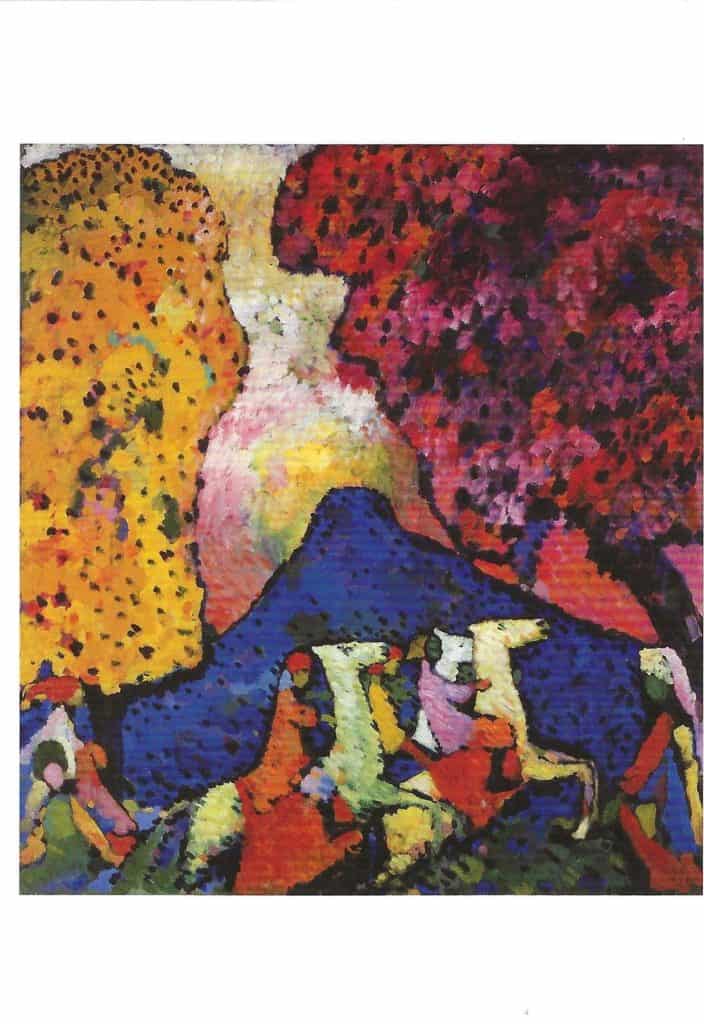
Kandinsky was a pioneer artist. He began his artistic journey during a time of significant cultural shifts in Europe at the end of the 19th century.
Born in 1866 in Moscow, Kandinsky initially pursued a career in law and economics, teaching at the University of Dorpat (now Tartu, Estonia). However, his fascination with art, music, and theology would ultimately lead him to abandon academia for the art world.
Kandinsky’s early work was heavily influenced by Impressionism and Post-Impressionism, movements that were burgeoning during his formative years. In 1896, he moved to Munich, where he encountered the works of notable artists like Vincent van Gogh and Claude Monet.
Their use of color and exploration of light profoundly impacted Kandinsky’s artistic philosophy. He began to experiment with color theory, increasingly believing that color could evoke emotional responses and convey spiritual truths, a concept that would become central to his later works.
During this initial phase, Kandinsky created landscapes and figurative pieces, often infused with local folkloric themes. His painting Blue Mountain, 1908, is a pivotal example of his early style, integrating elements of symbolism and abstraction. The vibrant use of color and the dynamic interplay of forms in this piece heralded his shift towards abstraction. The influence of music is evident in Kandinsky’s work; he often likened the relationship between color and emotion to that of music and sound, seeking to create a visual language that transcended all else.
In 1909, Kandinsky co-founded the Munich group known as “Phalanx,” an association of artists who sought to break free from traditional artistic constraints. His contributions during this early phase culminated in his first major solo exhibition in 1910, where he showcased works that pushed the boundaries of abstraction.
Following this exhibition, he further distanced himself from representational forms, favoring geometric shapes. His painting Composition VII, 1913, with its chaotic fusion of forms, colors, and lines, exemplifies his commitment to creating a purely abstract visual language.
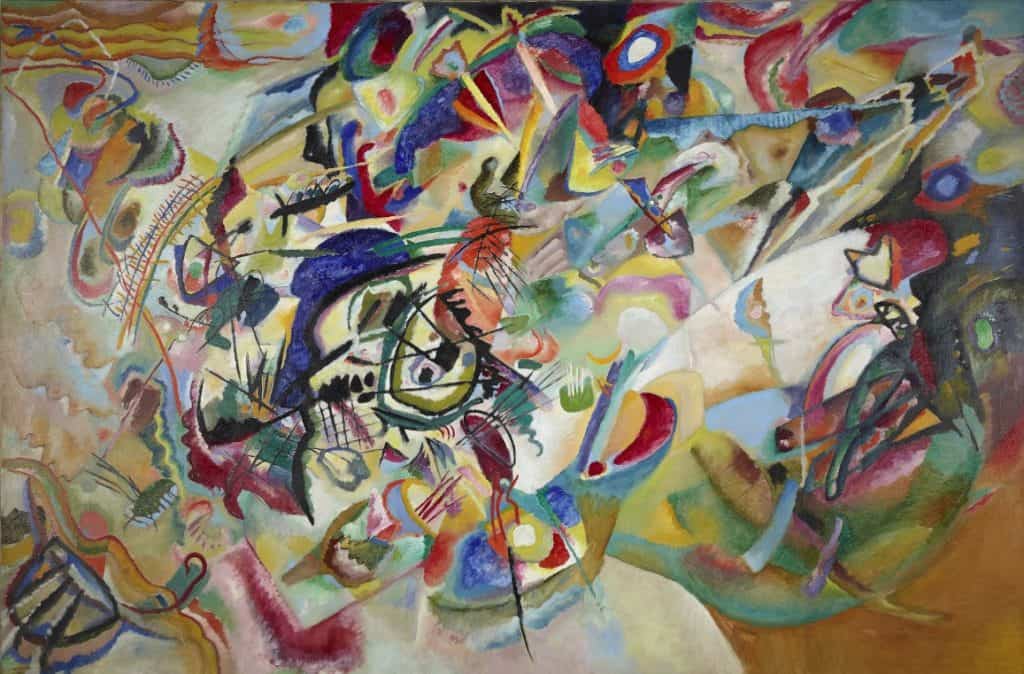
In his pursuit of abstraction, Kandinsky believed in the philosophy of the “universal language” of art. He envisioned a future where art could unite people across cultures and backgrounds through its emotional resonance. His early work thus laid the groundwork for the Expressionist movement and later influenced major avant-garde movements, including Abstract Expressionism and the Bauhaus school, which he joined in 1922.
Ultimately, Kandinsky’s early work was marked by a journey from representation to abstraction, driven by his exploration of spirituality, emotion, and the profound relationship between color and form. This exploration not only shaped his artistic output but also paved the way for future generations of artists who sought to express the inexpressible through the medium of art.
***
2024 Post Script: Kandinski’s painting Blue Mountain is now part of the foundation collection at the Solomon R. Guggenheim Museum at 1071 5th Avenue, New York, N.Y. The museum’s building is a landmark work of 20th-century architecture designed by Frank Lloyd Wright.
Solomon R. Guggenheim, a member of a wealthy mining family, began collecting art in the 1890s. In 1926, he met artist Hilla von Rebay, who introduced him to European avant-garde art, in particular abstract art that she felt had a spiritual aspect.
Guggenheim agreed and completely changed his collecting strategy, turning to the work of Wassily Kandinsky, among others. He began to display his collection to the public at his apartment in the Plaza Hotel in New York City. He initially considered building a museum at Rockefeller Center, but the plan was altered after the collection grew and the Guggenheim Foundation was created.
***
It may be that my opinion of museum postcards expressed in my title may better be understood with a brief explanation: it is my longtime considered opinion that art needs to be experienced. As a critic, that means, up close and personal. Certainly, to see art in national museums located in foreign countries on continents thousands of miles from home is impossible for most of us. But, seeing art on modern postcards is not an art experience; at best it is only an introduction to a conversation.
***
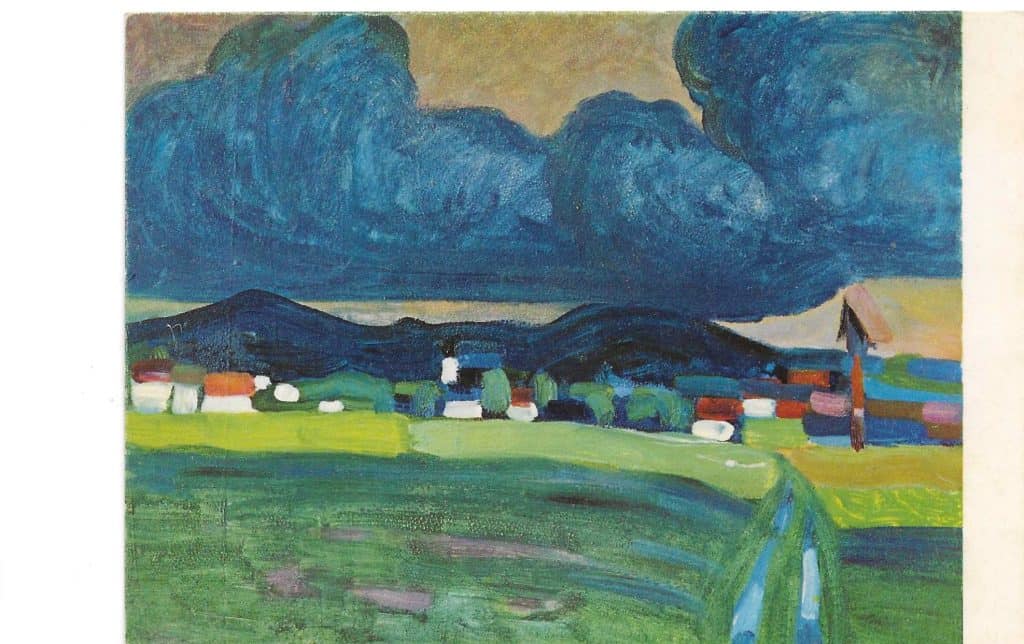
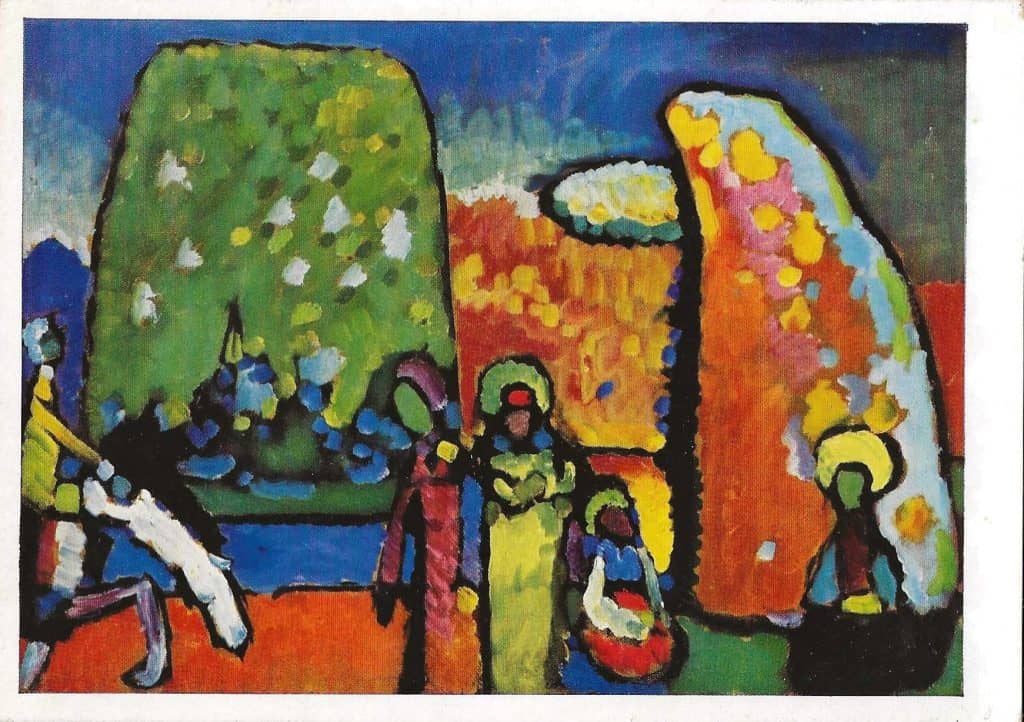
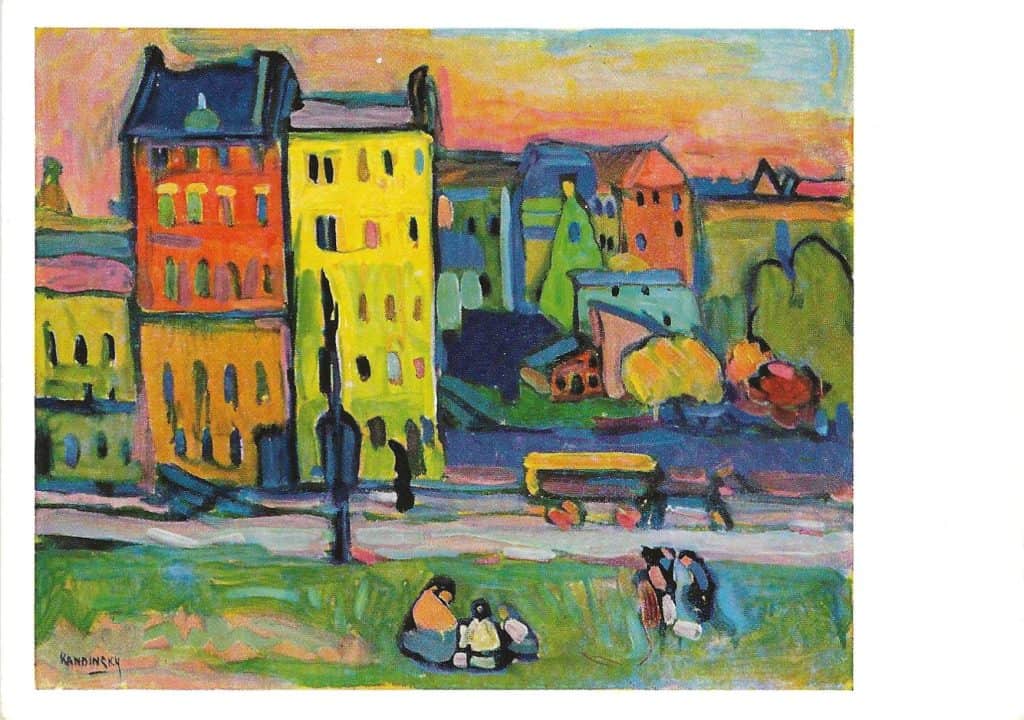
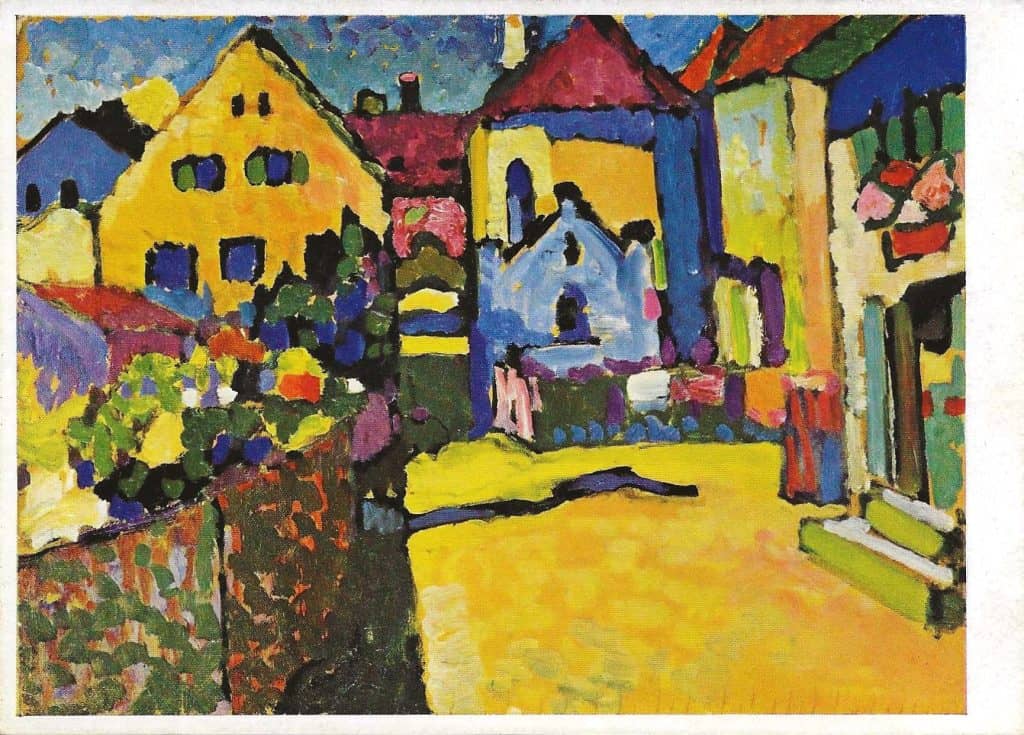
bloody interesting story, thanks, Ron
Thanks for an excellent column. I am neither an artist nor a critic, but I do have a couple of thoughts: 1) re: “art experienced up close and personal” – two excellent art museums in New England are the Wadsworth Atheneum in Hartford CT and the Worcester Art Museum in MA. At both you can get close to the artwork and see how a single brush stroke put a whole different aspect to a painting. Recently I attended the Isabella Stewart Gardener museum in Boston. Unfortunately the crowds there make seeing a lot of the art a chore, and several… Read more »
Please note Wassily Kandinsky art is featured in the thriller “Who Done It” Movie “Double Jeopardy” with Tommy Lee Jones, Ashley Judd, and Bruce Greenwood. Watch it for a good time and remember
Kandinsky……
Dear Mr Landsdell. Thank you for sharing your essay with us. It has introduced me to these wonderful, thought-provoking works. By sheer co-incidence, here in Australia, last night, I was watching a British film on television, based on a true story; which was called “Another Mother’s Son”. It was about the Nazi occupation of the British Channel Island called Jersey; during WWII; and a woman who harboured an escaped Russian prisoner of war there. She took him shopping into a bookstore and he found there and purchased a book on Kandinsky.
Some of the first postcards in my collection were depictions of works on display at the Cleveland Museum of Art.